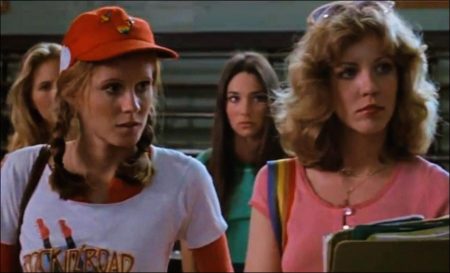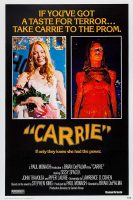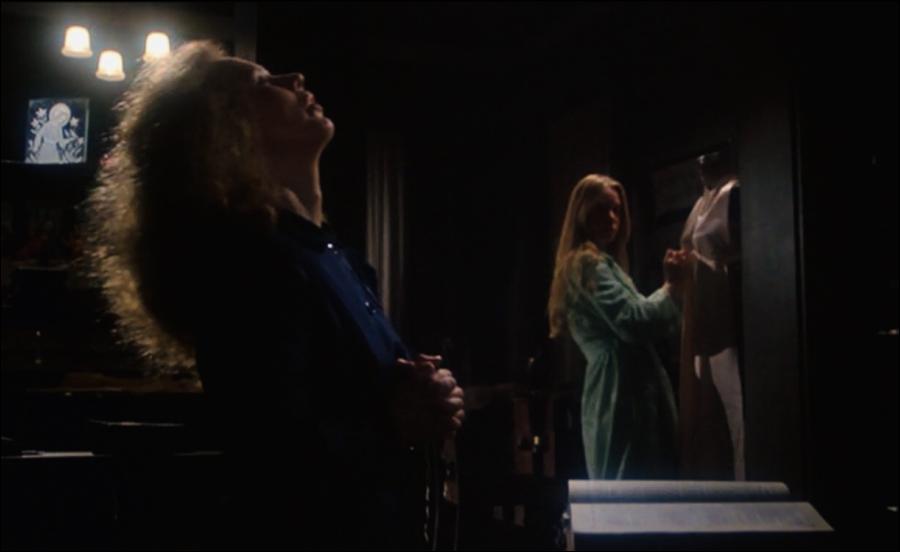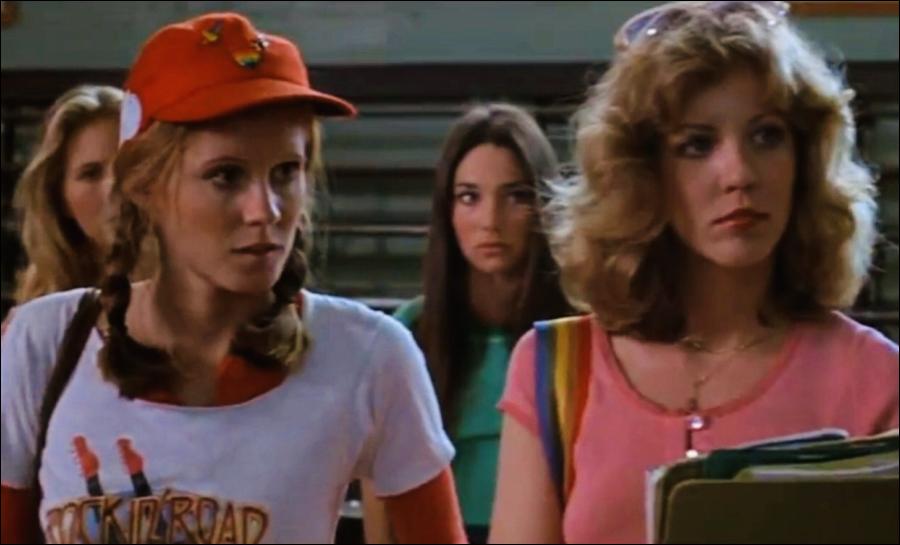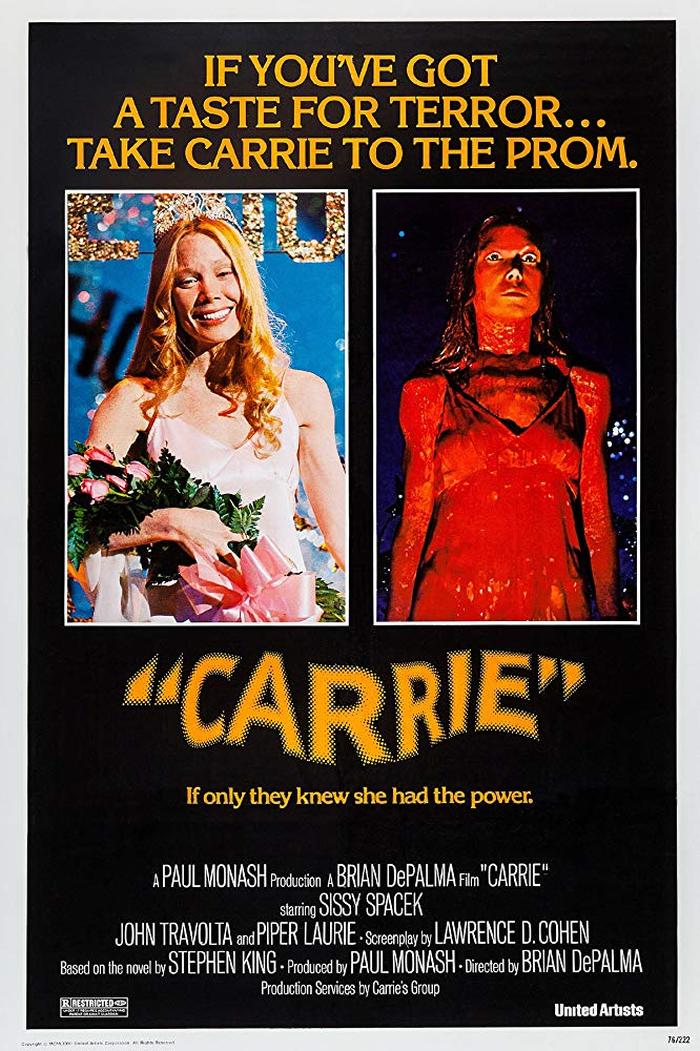Taglines: If you’ve got a taste for terror you have a date with…
Carrie movie storyline. Undoubtedly, Stephen King is one of the most important names that come to mind when we talk about thriller stories. The unique characters, magical atmospheres he creates create a greater pleasure as he integrates with the imagination of his readers. Every piece he wrote is a treasure. Of course, adapting King’s works to the cinema, which holds such a valuable treasure, was inevitable, and Brian De Palma started the first example of this movement by shooting çek Carrie “.
Am I can’t go back and read it again, King King said, referring to his first novel, Carrie. How would it be to bring the work that even his author thought so to the bloody live cinema screen? Would Brian De Palma really be able to lift his forehead under this burden? ’De Palma’s approach to the story was more ingenious than mine, and it was much more artistic, King King said before the audience. Famous for his dislike of films adapted from his novels, this master encouraged even more curiosity to the audience with these words.
Sissy Spacek and Piper Laurie starred in 1976’s Carrie. The film focused on the destructiveness of long-term suppression of negative emotions, ending the pitiful story of Carrie’s pathetic tyranny, crushed under the pressure of her mentally ill, over-Catholic mother at home, and her insensitive friends at school. The most important trump card of the film was Carrie’s telekinesis ability. Telekinesia, which means moving things with brain power, has been a topic of interest to Brian De Palma, who has been known for his curiosity in observing and even observing.
In the case of telekinesis, even the most innocent look could be fatal. As a matter of fact, it was inevitable to see this deadly rage in Carrie’s eyes towards the final of the film, which completely lost control and signed a bloody atrocity. It was undoubtedly frightening to witness that it was a pair of eyes that created a massacre.
The story, which became mystical thanks to telekinesis, contained remarkable analysis in its essence. Carrie, who has been described as the tohum seed of sin beri since her birth by her devout religious mother, discovered her telekinesis ability after her first menstrual bleeding when she was in school, began to change and strengthen as she stepped into adulthood, and soon the authority would pass from her mother. It was perhaps the first door to freedom for Carrie, who began to feel the power of breaking her shell for the first time, while her daughter’s menstruation for her mother was a curse to God’s weaker females.
Throughout the film, we find ourselves as individuals who sometimes feel pity for Carrie. But this girl, whom we love or even identify with, turns all our emotions upside down when she becomes a cella in the final of the film. Carrie, who has suffered so much violence and restraint, feels intimately that she will eventually turn to violence, but we don’t want to. But De Palma is a slap in the face with his bold interpretation and unique elements.
Undoubtedly, De Palma has the biggest share in making Carrie one of the classics of the horror genre. De Palma’s way of dealing with small fears in high school and reflecting it to the audience is simply ingenious. We watch with great excitement how long, serene plans are blended with hard and sudden cuts that explode like slaps in the most unexpected moments, and how music, sound and above all silence skillfully serves the tension. Parallel editing technique is applied, the screen is divided into two parts of the excitement increases. At this point, we once again realize that the choice of Sissy Spacek for the role of Carrie is a true genius.
Sissy Spacek was 27 years old when she played Carrie as a teenager. Spacek, who plays with a great risk, gives his role so well that he winks at the beginning of the film with a pale, different, wounded innocence, and at the end of the film, covered with pig blood, a victorious queen. This scene is so tense that one laughs out of laughter. After the tension, a sharp relief welcomes us. We see the “revolution ın of those who have been wronged ekranda
The end of the film, which was very original at the time, but a bored imitation for the day, reminds the audience that the nightmare is not over yet. As Carrie’s bloody hands grasp Sue’s arms, Sue wakes up from her nightmare and starts screaming. At that moment her mother tries to hold Sue’s arm in the same place, just as Carrie did in her nightmare. Here we can better understand the main theme of the book and the film, hastalık the diseased relationship between mothers and daughters ”. De Palma shows us the same plan over and over again to make this point clearer.
After a teenage girl’s persecution at school and home pressure, she discovered her telekinetic powers and stepped forward to use her ability as a result of the violence and oppression. With the help of Sissy Spacek, of course, he was slowly building and releasing us like a time bomb. We were witnessing perhaps the most successful adaptation of Stephen King and we were grateful to De Palma who opened the doors to the land of “Stephen King…
Carrie (1976)
Directed by: Brian De Palma
Starring: Sissy Spacek, Piper Laurie, Amy Irving, William Katt, John Travolta, Nancy Allen, Betty Buckley, Priscilla Pointer, Sydney Lassick, Stefan Gierasch, Michael Talbott
Screenplay by: Lawrence D. Cohen
Production Design by:
Cinematography by: Mario Tosi, Isidore Mankofsky
Film Editing by: Paul Hirsch
Costume Design by: Rosanna Norton
Set Decoration by: Robert Gould
Art Direction by: Jack Fisk, Bill Kenney
Music by: Pino Donaggio
MPAA Rating:
Distributed by: United Artists
Release Date: November 16, 1976
Views: 248


